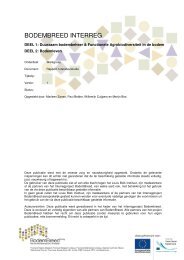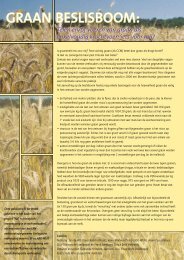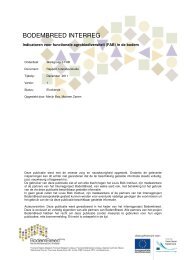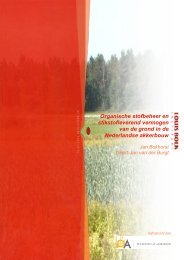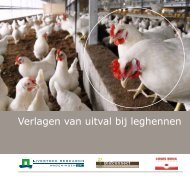Respiratory System Disorders and Therapy From a New - Louis Bolk ...
Respiratory System Disorders and Therapy From a New - Louis Bolk ...
Respiratory System Disorders and Therapy From a New - Louis Bolk ...
Create successful ePaper yourself
Turn your PDF publications into a flip-book with our unique Google optimized e-Paper software.
from the mesoderm in the yolk sac via the liver to the bone marrow. During life, when there<br />
is a need, the ability of the liver to contribute to erythropoiesis can be reactivated. This<br />
is also possible in regard to the vascularization of different parts of the body. Normally,<br />
the peritoneum is not vascularized. In appendicitis, a functional vascular system develops in<br />
the peritoneum through vasculoneogenesis. It will disappear again once the peritonitis has<br />
healed. In shock, people faint because there is an underfilling of the blood vessels to the<br />
brain as a result of the opening of vascular beds elsewhere in the body which draws away a<br />
large volume of blood. The infiltrate that is formed in pneumonia (<strong>and</strong> in other inflammatory<br />
processes, such as sinusitis or otitis) results from an increased blood supply <strong>and</strong> from fluid<br />
components <strong>and</strong> blood cells leaving the blood. There is a functional dislocation in these<br />
cases.<br />
Another instructive example is thrombosis. The fact that blood can clot is obviously of vital<br />
importance for the organism. However, blood clotting in veins that are not injured is a<br />
pathological process. Deep venous thrombosis is an example of this.<br />
The above examples make it clear that the ability for functional dislocation is a dynamic<br />
aspect that makes pathological processes recognizable as a healthy process in the wrong<br />
place.<br />
The Relation between Aeration <strong>and</strong> Vascularization of the Lung<br />
In the healthy lung, the relation between ventilation <strong>and</strong> perfusion varies. In the lung<br />
apex, aeration dominates vascularization <strong>and</strong> as a result there is more ventilation than<br />
perfusion. In the middle segments, ventilation <strong>and</strong> perfusion keep each other in balance<br />
<strong>and</strong>, at the base of the lung, perfusion dominates over ventilation.<br />
The dynamic approach can identify three areas of function with differentiated relations<br />
between ventilation <strong>and</strong> perfusion in the lung. The lung apex is ‘a bit asthmatic,’ <strong>and</strong><br />
the lung base is ‘a bit pneumonia-like.’ Shifts within these relations can be described as<br />
a ‘dislocation’ in space. In asthma, COPD, <strong>and</strong> related diseases, the entire lung assumes<br />
characteristics of the lung apex (fig.5.3.); in pneumonia <strong>and</strong> related diseases, it assumes<br />
characteristics of the lung base (fig.5.2.).





